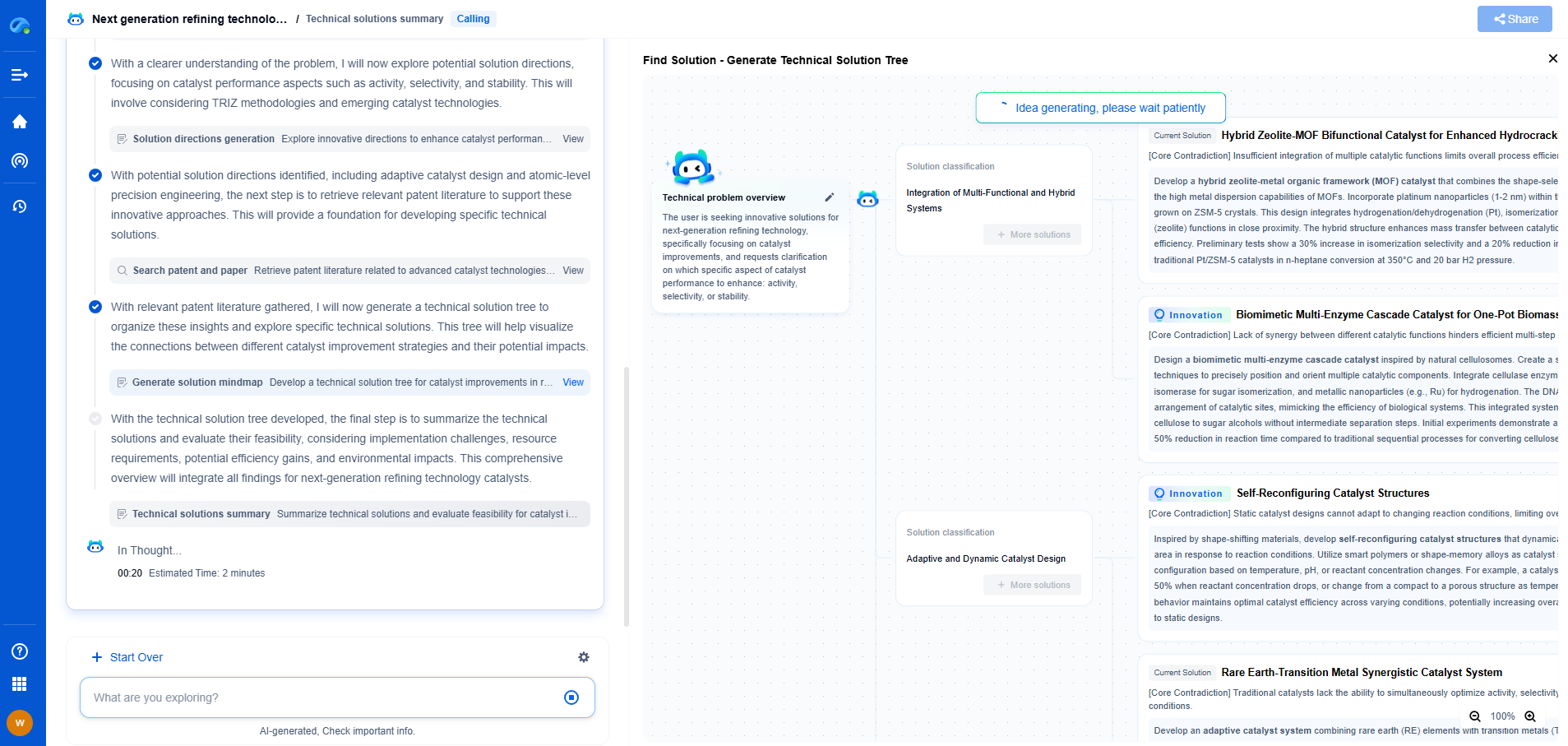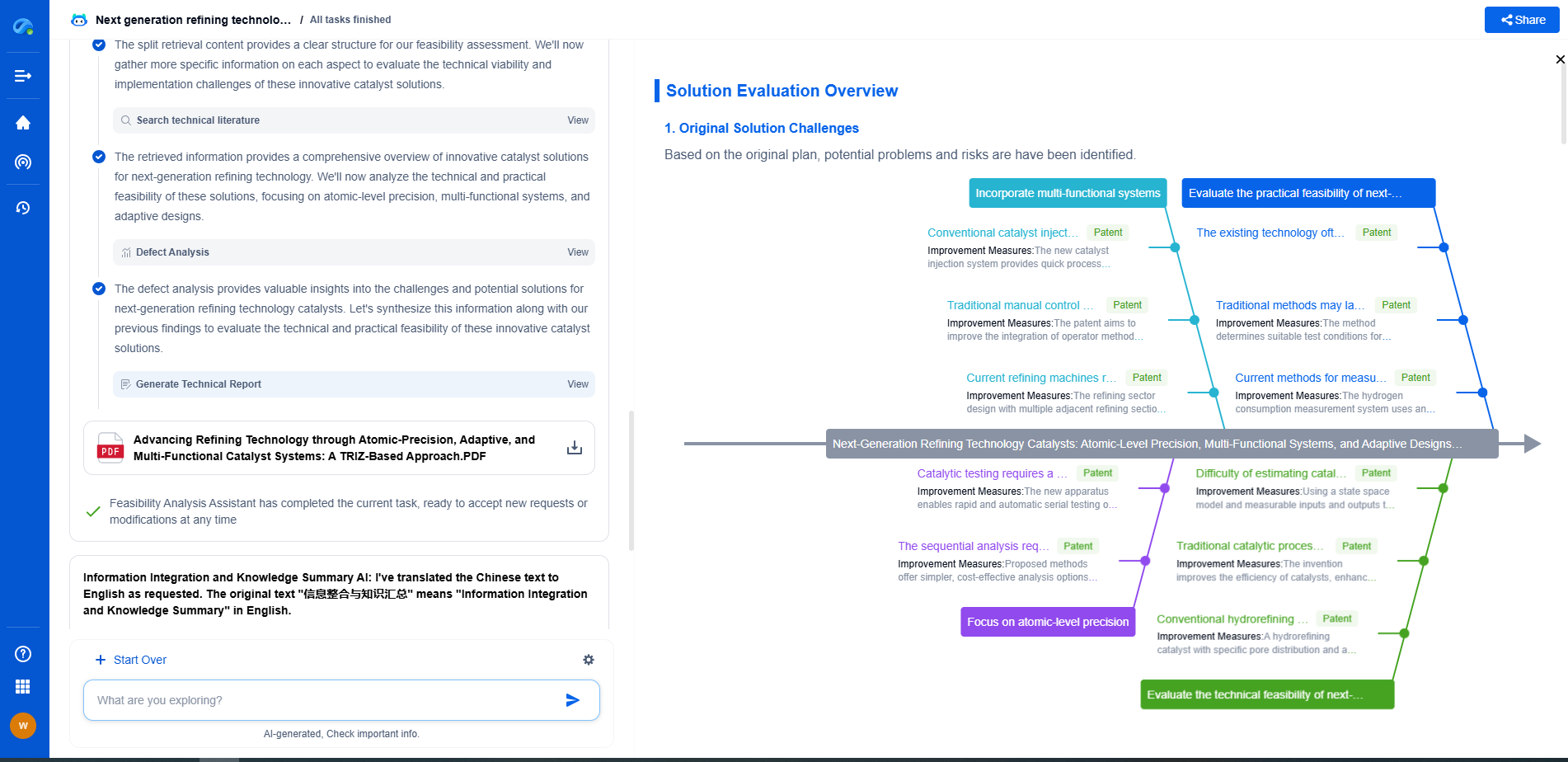Spectrum Analyzer or EMI Receiver: What Should You Use for EMC Testing?
JUL 9, 2025 |
Electromagnetic Compatibility (EMC) testing is crucial for ensuring that electrical and electronic devices operate without interfering with each other. Manufacturers must perform these tests to comply with regulatory standards, enhance product reliability, and ensure user safety. Two primary tools are commonly employed for EMC testing: spectrum analyzers and EMI receivers. Understanding their differences and applications can help determine which is best suited for your needs.
**Spectrum Analyzers: An Overview**
Spectrum analyzers are versatile tools widely used in EMC testing. They measure the magnitude of an input signal versus frequency within the full frequency range of the instrument. Spectrum analyzers are valued for their broad application scope, high sensitivity, and ability to provide detailed signal analysis.
Their flexibility allows them to be used in a range of testing scenarios, from identifying signal interference in wireless communications to performing environmental noise measurements. Their high frequency range and resolution bandwidth make them suitable for general-purpose testing and troubleshooting in industries like telecommunications and broadcasting.
**Advantages of Spectrum Analyzers**
One of the key advantages of spectrum analyzers is their ability to provide a visual representation of the signals across a wide frequency range. This visualization capability allows engineers to identify and analyze signals that may be causing interference or performance issues.
Spectrum analyzers also offer real-time analysis, which is crucial for observing intermittent or rapidly changing signals. Their portability makes them suitable for both laboratory and field testing, providing flexibility in various testing environments.
**Limitations of Spectrum Analyzers**
Despite their versatility, spectrum analyzers have limitations in EMC testing. They may not always meet the stringent requirements for compliance testing due to their lower dynamic range and sensitivity compared to dedicated EMI receivers. Additionally, spectrum analyzers typically do not have built-in preselection filters, which can result in less accurate measurements in real-world environments with multiple signals.
**EMI Receivers: An Overview**
EMI receivers are specialized instruments designed specifically for EMC compliance testing. They are built to meet the requirements outlined in international standards like CISPR 16-1-1, ensuring accurate and consistent measurements. EMI receivers are equipped with preselection filters and detectors that provide precise measurements of electromagnetic interference.
**Advantages of EMI Receivers**
The primary advantage of EMI receivers is their ability to deliver high accuracy and repeatability in compliance testing. Their design ensures that measurements are conducted following strict regulatory standards, making them the preferred choice for formal EMC testing.
EMI receivers also offer higher sensitivity and dynamic range compared to spectrum analyzers, enabling the detection of low-level signals that might otherwise be missed. This capability is essential for manufacturers seeking to ensure that their products meet stringent EMC standards.
**Limitations of EMI Receivers**
While EMI receivers excel in compliance testing, they are often less flexible than spectrum analyzers. Their specialization means they are not as well-suited for general-purpose signal analysis or real-time observation of dynamic signals. Additionally, EMI receivers can be more expensive, which may be a consideration for smaller companies or those with budget constraints.
**Choosing the Right Tool for EMC Testing**
When deciding between a spectrum analyzer and an EMI receiver for EMC testing, consider the specific requirements of your testing scenario. If you need a tool for compliance testing that adheres to international standards, an EMI receiver is likely the best choice. Its precision and adherence to regulatory standards make it indispensable for formal testing environments.
However, if your needs extend beyond compliance testing and include troubleshooting, signal visualization, or real-time analysis, a spectrum analyzer offers greater flexibility and versatility. It can serve as a cost-effective solution for a wide range of applications while providing valuable insights into signal behavior.
**Conclusion**
Both spectrum analyzers and EMI receivers have their place in EMC testing. Your choice should be guided by the specific demands of your testing environment, budget considerations, and the level of precision required. By understanding the strengths and limitations of each tool, you can make an informed decision that ensures the integrity and performance of your electronic devices.
Navigating the evolving world of electrical measurement—from high-precision signal integrity to advanced test protocols like BERT or TDR—demands more than just expertise; it demands smart tools.
Patsnap Eureka empowers you to keep up—by turning complex patent data, technical parameters, and industry signals into actionable insight. It’s your AI partner for exploring what’s next in test, measurement, and electrical diagnostics.
💡 Try Patsnap Eureka for free and see how it transforms the way you work with electrical measurement technologies.
- R&D
- Intellectual Property
- Life Sciences
- Materials
- Tech Scout
- Unparalleled Data Quality
- Higher Quality Content
- 60% Fewer Hallucinations
Browse by: Latest US Patents, China's latest patents, Technical Efficacy Thesaurus, Application Domain, Technology Topic, Popular Technical Reports.
© 2025 PatSnap. All rights reserved.Legal|Privacy policy|Modern Slavery Act Transparency Statement|Sitemap|About US| Contact US: help@patsnap.com

